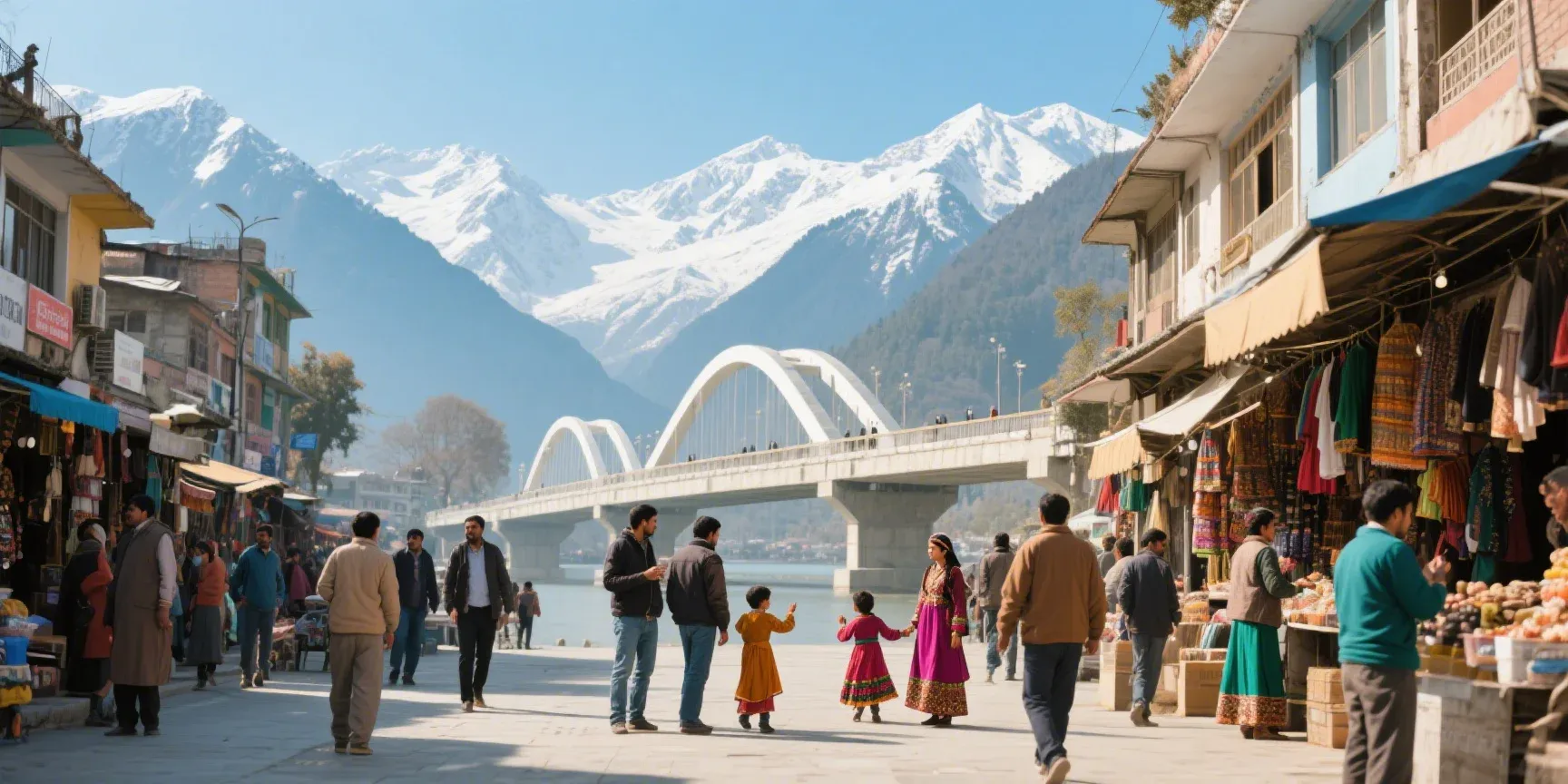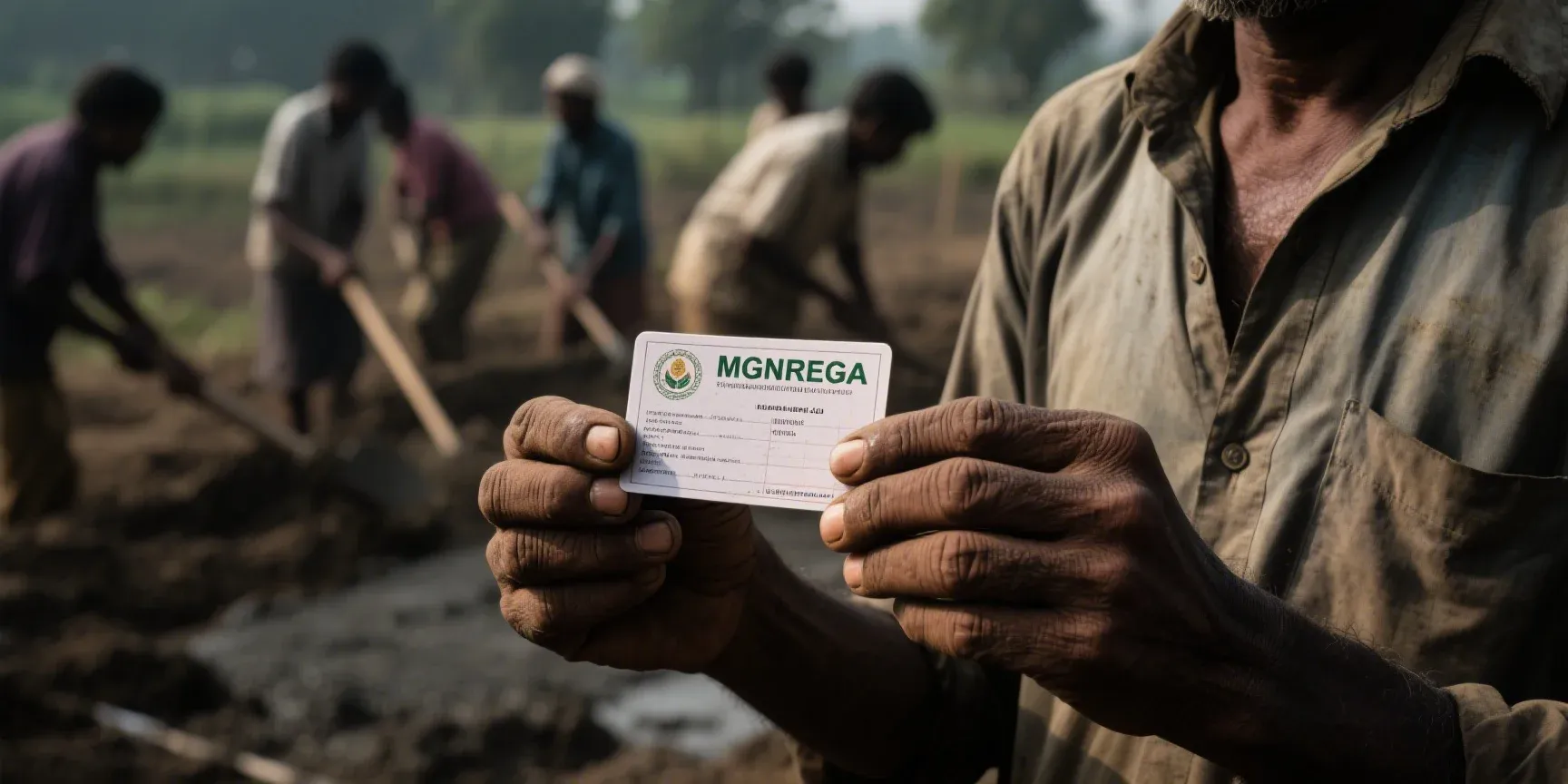
Understanding Article 370: A Deep Dive into its Meaning, History, and Abrogation
Explore the complete history and meaning of Article 370, from its origins in the Instrument of Accession to its abrogation on August 5, 2019, and the landmark Supreme Court verdict that redefined the future of Jammu and Kashmir.
For over seven decades, Article 370 of the Indian Constitution stood as a unique and often contentious provision, shaping the complex relationship between the state of Jammu and Kashmir and the Republic of India. It was a constitutional bridge born from the tumultuous events of the subcontinent’s partition, granting the region a special status and a degree of autonomy unmatched by any other Indian state. This arrangement, however, came to an abrupt end on August 5, 2019, when the Government of India rendered the article inoperative, a move that fundamentally altered the political and legal landscape of the region.
This article provides a comprehensive exploration of Article 370, from its historical origins to its eventual abrogation and the landmark Supreme Court judgment that followed. We will delve into what Article 370 meant, the specific provisions it contained, the reasons for its removal, and the future it portends for Jammu, Kashmir, and Ladakh.
What Was Article 370? The Meaning and Constitutional Status
Article 370 was included in the Constitution of India under Part XXI, titled “Temporary, Transitional and Special Provisions.” The very placement of the article indicated its intended temporary nature, designed to provide a framework for governing Jammu and Kashmir until its relationship with India could be fully finalized. It was a constitutional provision that gave special status to Jammu and Kashmir, which was administered by India as a state from 1952 until October 31, 2019.
The core of Article 370 was its limitation on the legislative power of the Indian Parliament concerning Jammu and Kashmir. Unlike other states, where the Indian Constitution applies in its entirety, Article 370 stipulated a more nuanced application.
The Three Pillars of Autonomy
Under Article 370, the power of the Indian Parliament to make laws for Jammu and Kashmir was restricted to three primary domains, as specified in the Instrument of Accession signed in 1947:
- Defence: Matters related to the military, national security, and defence infrastructure.
- Foreign Affairs: India’s external relations, diplomatic missions, and international treaties.
- Communications: The operation and maintenance of postal services, telegraphs, telephones, and broadcasting.
For any other subject, the Indian Parliament could only legislate with the “concurrence of the Government of the State.” This “concurrence” itself was provisional and required ratification by the Constituent Assembly of Jammu and Kashmir.
This unique arrangement led to several significant distinctions for the state:
- A Separate Constitution: Jammu and Kashmir was the only state in India permitted to have its own constitution, drafted by its own Constituent Assembly, which came into force in 1956.
- A State Flag: The state had its own flag, which was flown alongside the national flag of India.
- Residuary Powers: In the Indian federal structure, residuary powers of legislation (on subjects not mentioned in the Union or State lists) lie with the Parliament. However, for Jammu and Kashmir, these powers were vested in the state legislature.
The Text of the Law: A Closer Look at its Clauses
The original text of Article 370, as enshrined in the Constitution, laid out these provisions explicitly.
- Clause (1)(b) limited Parliament’s law-making power to the matters specified in the Instrument of Accession (defence, foreign affairs, communications) and other matters for which the President could issue an order, but only with the “concurrence of the Government of the State.”
- Clause (1)(d) allowed other provisions of the Indian Constitution to be applied to the state, but with “exceptions and modifications” specified by the President, again requiring the state government’s concurrence.
- Clause (3) was perhaps the most crucial and ultimately, the most debated. It stated that the President could, by public notification, declare that Article 370 would cease to be operative. However, it contained a critical condition: this could only be done upon the “recommendation of the Constituent Assembly of the State.”
It was this proviso in Clause (3) that gave rise to the belief that Article 370 had attained a permanent status after the Jammu and Kashmir Constituent Assembly dissolved itself in 1957 without recommending its abrogation. This interpretation was even upheld by the Supreme Court in previous rulings, creating a significant legal challenge for any future attempts to remove the article.
A Product of Partition: The Historical Context of Article 370
To understand why Article 370 existed, one must go back to the chaotic and violent partition of the Indian subcontinent in 1947. The end of British rule resulted in the creation of two new nations, India and Pakistan, and left the fate of over 500 princely states hanging in the balance. These states, which had been under indirect British rule, were given a choice: accede to India, accede to Pakistan, or, in theory, remain independent.
The state of Jammu and Kashmir, with its Hindu ruler, Maharaja Hari Singh, and a Muslim-majority population, faced a particularly difficult decision. The Maharaja initially hoped to keep his kingdom independent, a “Switzerland of the East,” and delayed his choice. However, this period of indecision was shattered in October 1947 when pro-Pakistani tribal militias and soldiers invaded the state, advancing rapidly towards the capital, Srinagar.
The Instrument of Accession: A Pact Under Duress
Facing the imminent collapse of his kingdom, Maharaja Hari Singh made a desperate appeal to India for military assistance. The Indian government, led by Prime Minister Jawaharlal Nehru and Home Minister Sardar Vallabhbhai Patel, agreed to help, but on one condition: Jammu and Kashmir must formally accede to the Dominion of India.
On October 26, 1947, Maharaja Hari Singh signed the Instrument of Accession. This legal document was the foundation of Jammu and Kashmir’s relationship with India. Crucially, the accession was not unconditional. It was limited to the three subjects that formed the basis of Article 370: Defence, Foreign Affairs, and Communications. The Instrument explicitly stated that the Indian Parliament could make laws for the state only on these matters. For all other areas of governance, the state’s own legislature would hold power. This limited accession was the bedrock upon which the special status of Jammu and Kashmir under Article 370 was built.
The Birth of a “Temporary” Provision
The Instrument of Accession was an emergency measure. The next step was to give this unique arrangement a constitutional form within the new Constitution of India, which was then being drafted. This led to intense negotiations between the Indian leadership and the popular Kashmiri leader, Sheikh Abdullah, who was by then the Prime Minister of Jammu and Kashmir.
The result of these negotiations was Article 370 of the Indian Constitution. It was designed to formalize the terms of the Instrument of Accession while also providing a political and legal pathway for the future integration of the state. The word “Temporary” was added to its title to signify that the arrangement was not meant to be permanent. The prevailing understanding at the time was that the Constituent Assembly of Jammu and Kashmir, once convened, would determine the final political status of the state and its relationship with India. It was believed that this body would either recommend the full application of the Indian Constitution, thus rendering Article 370 unnecessary, or establish a different, permanent framework.
This temporary provision, born of necessity and compromise, would go on to define the region’s relationship with India for the next 70 years, culminating in a dramatic and contested finale. The eventual date of Article 370’s removal would become a landmark in India’s political history, and for seven decades, the article’s text governed the very meaning of Jammu and Kashmir’s place in the Indian union.
The End of an Era: The Abrogation of Article 370 and Reorganisation
The “temporary” provision of Article 370, which had shaped the destiny of Jammu and Kashmir for 70 years, was brought to a stunning and decisive end on a single day. The removal date of Article 370, August 5, 2019, will forever be a pivotal moment in the history of modern India. On this day, the Government of India, through a series of swift and complex constitutional maneuvers, rendered the article inoperative and fundamentally altered the status of the state.
The primary legal challenge was the proviso in Article 370(3), which stated that the article could only be abrogated upon the recommendation of the Constituent Assembly of Jammu and Kashmir. Since this assembly had been dissolved in 1957 without making such a recommendation, the article was widely considered to have acquired a permanent character. The government’s strategy, therefore, was not to repeal the article directly, but to use the provisions of the Constitution itself to make it defunct.
The Constitutional Pathway to Abrogation
The process unfolded through a carefully orchestrated sequence of presidential orders and parliamentary actions:
-
Presidential Order C.O. 272: The first step was the issuance of Constitution (Application to Jammu and Kashmir) Order, 2019. This order, issued by the President of India, used the power granted under Article 370(1) to apply provisions of the Indian Constitution to Jammu and Kashmir. Crucially, it added a new clause to Article 367, the interpretation clause of the Constitution. This new clause stipulated that for the purposes of Article 370, the term “Constituent Assembly of the State” would now be read as the “Legislative Assembly of the State.”
-
The Concurrence of the ‘State Government’: At the time, Jammu and Kashmir was under President’s Rule, meaning there was no elected state government or legislative assembly. The powers of the state legislature were vested in the Indian Parliament, and the functions of the state government were being exercised by the Governor, an appointee of the central government. Therefore, the “concurrence of the Government of the State” required for Presidential Order C.O. 272 was given by the Governor.
-
Parliamentary Recommendation: With the “Constituent Assembly” now legally redefined as the “Legislative Assembly,” and with the powers of the Legislative Assembly resting with Parliament, the Rajya Sabha (the upper house of the Indian Parliament) passed a statutory resolution recommending that the President issue a declaration under Article 370(3) to make the article inoperative. The Lok Sabha (the lower house) passed the same resolution the following day.
-
Presidential Order C.O. 273: Acting on this recommendation from Parliament (which was now acting as the state’s legislative assembly), the President issued the final order, declaring that from August 6, 2019, all clauses of Article 370 would cease to be operative.
In effect, the government used Article 370’s own mechanisms to dismantle it, creatively reinterpreting its key terms to overcome the legal hurdle of the dissolved Constituent Assembly.
The Jammu and Kashmir Reorganisation Act, 2019
Alongside the abrogation of Article 370, the government introduced and passed the Jammu and Kashmir Reorganisation Act, 2019. This act implemented a monumental change in the geography and political status of the region:
- Bifurcation of the State: The Act bifurcated the state of Jammu and Kashmir into two new Union Territories.
- Union Territory of Jammu and Kashmir: This UT would include all districts of the former state except for Kargil and Leh. It was created with a provision for a legislative assembly, similar to Delhi and Puducherry.
- Union Territory of Ladakh: This UT was created without a legislative assembly and would be administered directly by a Lieutenant Governor appointed by the central government. This fulfilled a long-standing demand of the people of the Ladakh region.
This reorganisation meant that for the first time since its accession, the region was no longer a state but was brought under the direct administrative control of the central government.
Rationale for the Removal
The government justified this historic decision on several grounds, arguing that Article 370 of the Indian Constitution had been a barrier to progress and integration. The key arguments included:
- Promoting Economic Development: It was argued that the special status had prevented large-scale private investment, hindering industrial growth and job creation.
- Ensuring Full Integration: The government stated the move was necessary to fully integrate Jammu and Kashmir with the rest of India, ensuring that all central laws and constitutional benefits would apply equally to its citizens.
- Ending Separatism and Terrorism: A primary justification was that Article 370 had fostered a sense of separatism and was exploited by hostile external forces to fuel a decades-long insurgency and cross-border terrorism.
- Upholding Equal Rights: The government pointed out that certain laws and rights guaranteed to Indian citizens were not applicable in Jammu and Kashmir, citing the lack of rights for women who married outside the state and the non-application of reservation policies for certain communities.
The abrogation of Article 370 and the subsequent reorganisation were immediately challenged, leading to a prolonged legal battle that would ultimately be settled by the highest court in the land.
The Final Say: The Supreme Court’s Verdict on Article 370
The constitutional validity of the abrogation of Article 370 was immediately contested. A battery of petitions was filed in the Supreme Court of India, challenging the legality of the Presidential Orders and the Jammu and Kashmir Reorganisation Act. The petitioners argued that the process was unconstitutional, a misuse of executive power, and a violation of the special commitments made to the people of Jammu and Kashmir. After years of legal proceedings, a five-judge Constitution Bench of the Supreme Court delivered its unanimous and historic verdict on December 11, 2023, bringing a legal closure to the contentious issue.
The Supreme Court upheld the actions of the Government of India in their entirety. The verdict was a comprehensive vindication of the constitutional strategy employed to make Article 370 inoperative.
Key Findings of the Supreme Court Judgment
The Court’s judgment addressed several fundamental questions regarding the nature of Article 370 and the powers of the President and Parliament.
-
Article 370 Was a Temporary Provision: The central argument against the abrogation was that Article 370 had attained a permanent character after the dissolution of the Jammu and Kashmir Constituent Assembly in 1957. The Supreme Court rejected this view. It held that the provision was explicitly placed in Part XXI of the Constitution, which deals with “Temporary, Transitional and Special Provisions.” The Court concluded that it was designed as a temporary measure to facilitate the constitutional integration of the state and was not intended to be a permanent feature of the Constitution.
-
Jammu and Kashmir Held No Internal Sovereignty: The Court ruled that upon signing the Instrument of Accession in 1947 and with the adoption of the Constitution of India, the state of Jammu and Kashmir did not retain any element of sovereignty. Its full sovereignty was ceded to the Dominion of India. Therefore, the argument that the abrogation violated a sovereign commitment was dismissed. The autonomy that Article 370 provided did not equate to sovereignty.
-
Validity of Presidential Power During President’s Rule: The Court affirmed the validity of the President’s actions. It held that the President, acting on the aid and advice of the Union Government, could exercise the powers of the state legislature when a state is under President’s Rule. The Court found that the issuance of Presidential Order C.O. 272, which reinterpreted “Constituent Assembly” to mean “Legislative Assembly,” was a valid exercise of constitutional power. This interpretation was the legal key that unlocked the abrogation, and the Supreme Court stamped its approval on it.
-
Upholding the Reorganisation: The Court also upheld the validity of the Jammu and Kashmir Reorganisation Act, which created the Union Territories of Jammu and Kashmir and Ladakh. It specifically noted that the creation of the Union Territory of Ladakh from the erstwhile state was valid, fulfilling a long-standing demand of the region.
A Roadmap for the Future: Elections and Statehood
While the Court upheld the abrogation, it also laid out a clear path for the political future of the region. Acknowledging the Solicitor General’s submission on behalf of the government that the Union Territory status of Jammu and Kashmir is temporary, the Court issued two significant directives:
- Restoration of Statehood: The Court directed the Government of India to take steps to restore statehood to the Union Territory of Jammu and Kashmir “at the earliest.”
- Holding Elections: The Court mandated the Election Commission of India to take all necessary steps to conduct elections for the Legislative Assembly of Jammu and Kashmir by September 30, 2024.
These directives aim to restore the democratic process in the region, which has been without an elected government since 2018.
Conclusion: A New Chapter for Jammu, Kashmir, and Ladakh
The journey of Article 370 of the Indian Constitution is a story of historical complexity, political compromise, and eventual, decisive change. Born from the fire of Partition as a temporary bridge, it became a defining feature of Jammu and Kashmir’s relationship with India for seven decades, granting a special status that was both a source of autonomy and a subject of intense debate.
The removal of Article 370 on August 5, 2019, marked a fundamental paradigm shift. The government’s actions, justified on the grounds of promoting development, national security, and complete integration, were bold and controversial. They effectively erased the constitutional barrier that separated Jammu and Kashmir from the rest of the country, extending all provisions of the Indian Constitution to the region and reorganizing it into two Union Territories.
The Supreme Court’s 2023 verdict provided the final legal affirmation of this move, settling the constitutional questions surrounding the abrogation. By declaring Article 370 a temporary provision and upholding the process of its removal, the Court closed a long and contentious chapter of Indian constitutional law.
Today, the future of the region is being written on a new slate. The focus has shifted towards economic development projects, improving the security situation, and reintegrating the political mainstream. The true test of the 2019 decision will lie in the long-term peace and prosperity of the people of Jammu, Kashmir, and Ladakh. With the Supreme Court’s mandate for elections by September 2024 and the promise of restored statehood, the path forward is one that seeks to combine federal oversight with the restoration of local, democratic governance, heralding a new and transformative era for this historic region.


